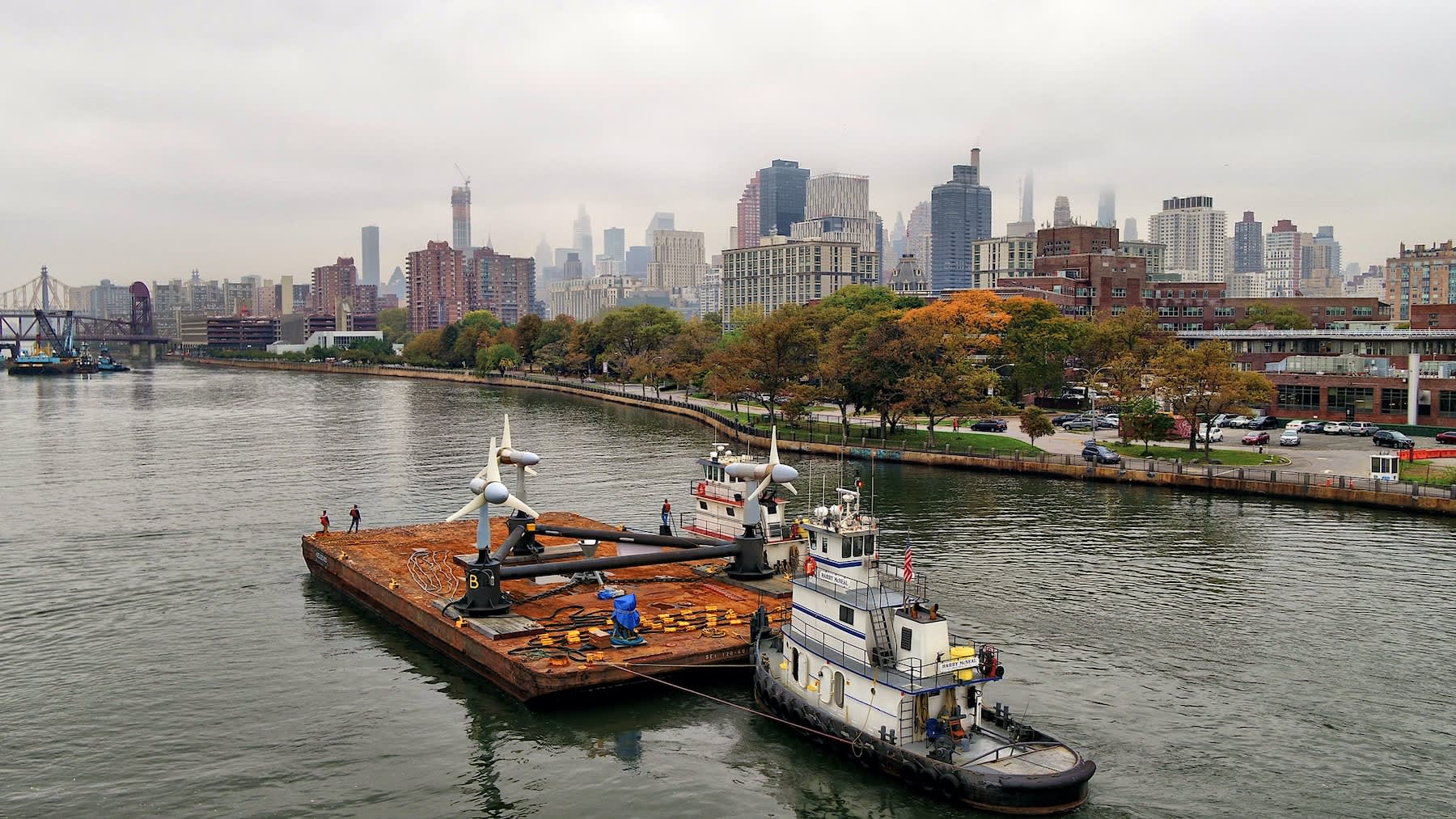In New York’s East River, a tidal power project takes shape

This image shows the three turbines from Verdant Power’s Roosevelt Island Tidal Energy project, located in New York’s East River.
Verdant Power
Over the years, New York City’s East River has been commemorated in song, provided iconic shots for movies and even inspired the composition of poetry. composition of poetry.
From ferries taking commuters to and from work to larger ships transporting cargo, this body of water — a tidal strait which has suffered greatly from the effects of pollution over the years — can be a bustling hive of activity.
For a good while now, it’s also been home to a scheme focused on the development of tidal power, a form of renewable energy which could have an important role to play in the years ahead.
Verdant Power’s Roosevelt Island Tidal Energy (RITE) project, as it’s known, has been in development since 2002. Towards the end of October, the initiative took another step forward when a new tidal power array consisting of three turbines was installed.
The broad goal of this current scheme — Verdant Power has installed turbines in the East River before — is to serve as a pre-commercial “technology demonstration” of the company’s fifth generation turbine system as well as its TriFrame mounting technology.
One aspect of the operation will be to assess how the turbines function in their environment. “We will have a ‘retrieve and replace’ operation after six months,” Verdant Power’s CEO, John Banigan, told CNBC in a recent phone interview.
He explained that one turbine would be removed from the mounting system and replaced with another, with the technology then redeployed for further operations of “at least” six months.
Of the turbine removed from the water, Banigan went on to add: “We’ll look at those components, we’ll look at the guts, the working of the turbine itself and learn what we can after six months of operating in a harsh environment — a corrosive, seawater environment — just to see if everything is up to expectations, as we’re confident that it will be.”
In terms of its size, the scheme is small: Each turbine at Verdant Power’s installation has a capacity of just 35 kilowatts, with co-founder Trey Taylor describing it as a “demonstration project” that had been “designed to be readily scaled for any size, (and a) depth of water up to maybe 60 meters.” The capacity of the turbines is based on the 5-meter diameter of their rotors as well as an average tidal current speed of 2.25 meters per second.
Verdant Power has received funding from organizations including the U.S. Department of Energy and the New York State Energy Research and Development Authority. Despite being a small demonstration scheme, its most recent installation has started to produce electricity under a pilot commercial license from the U.S. Federal Energy Regulatory Commission. The system has been connected to a local grid of Con Edison, allowing it to send electricity to Roosevelt Island.
Plans and potential
The recent steps taken by the RITE project represent yet another example of how schemes focused on tidal power are being developed and tested around the world.
These include Nova Innovation’s installation of three turbines at a site in the Shetland Islands, Scotland, in 2016. A fourth was added in 2020 as part of a project to extend the array — which has been sending electricity to the grid for more than four years now — to six turbines.
Another development also located in waters north of Scotland is the MeyGen tidal stream array. The first phase of the array, which is made up of four 1.5 megawatt turbines, sent more than 13.8 gigawatt hours (GWh) of electricity to the grid last year, according to an operational update issued in January.
This figure represented a significant increase compared to the previous high of 7.4 GWh recorded in 2018.
Challenges ahead
While there are grand plans for the marine based renewables sector — to give just one example, the European Union wants 40 GW of ocean energy such as tidal and wave power by 2050, up from 13 megawatts today — a range of challenges exist when it comes to the development and expansion of the technology.
The International Energy Agency has described marine technologies as holding “great potential” but adds that extra policy support is required for research, design and development in order to “enable the cost reductions that come with the commissioning of larger commercial plants.”
Back in the U.S., Verdant Power’s John Banigan listed a range of similar factors that would play an important role going forward.
He explained how in the years ahead the industry, as well as his company, would face the challenge of undertaking pilot projects and evolving those into full-scale commercial ones.
“Number two (is) to bring our costs down over time, and that will occur with the undertaking of actual projects and the generation of volumes of business and capital goods manufacturing or developments,” he added.
He struck an optimistic note regarding the future, however. “The biggest industry challenge is really to exploit the market while bringing our costs down to be competitive with alternative renewable sources in particular, and we are in the process of doing that, and will be successful.”




